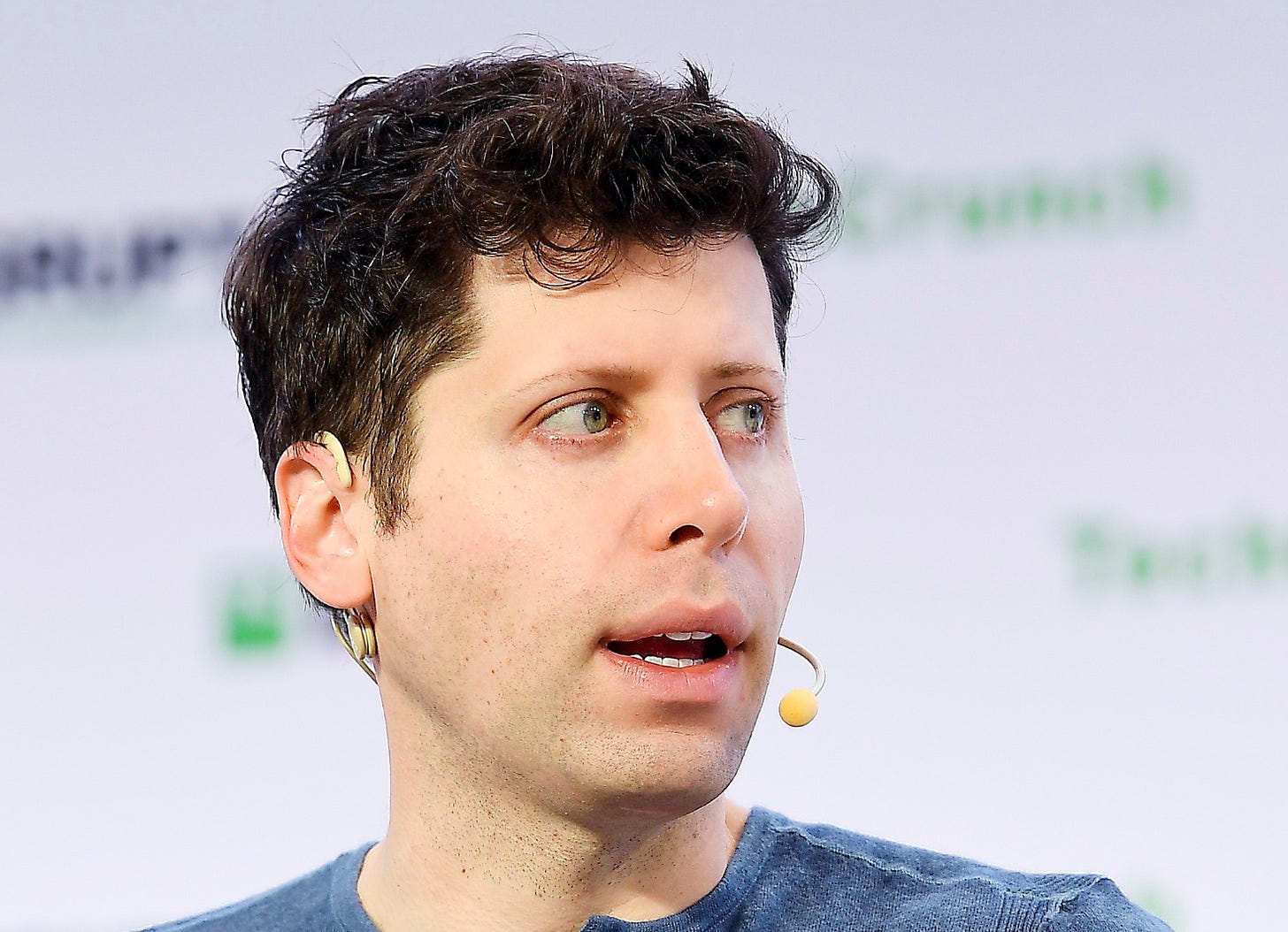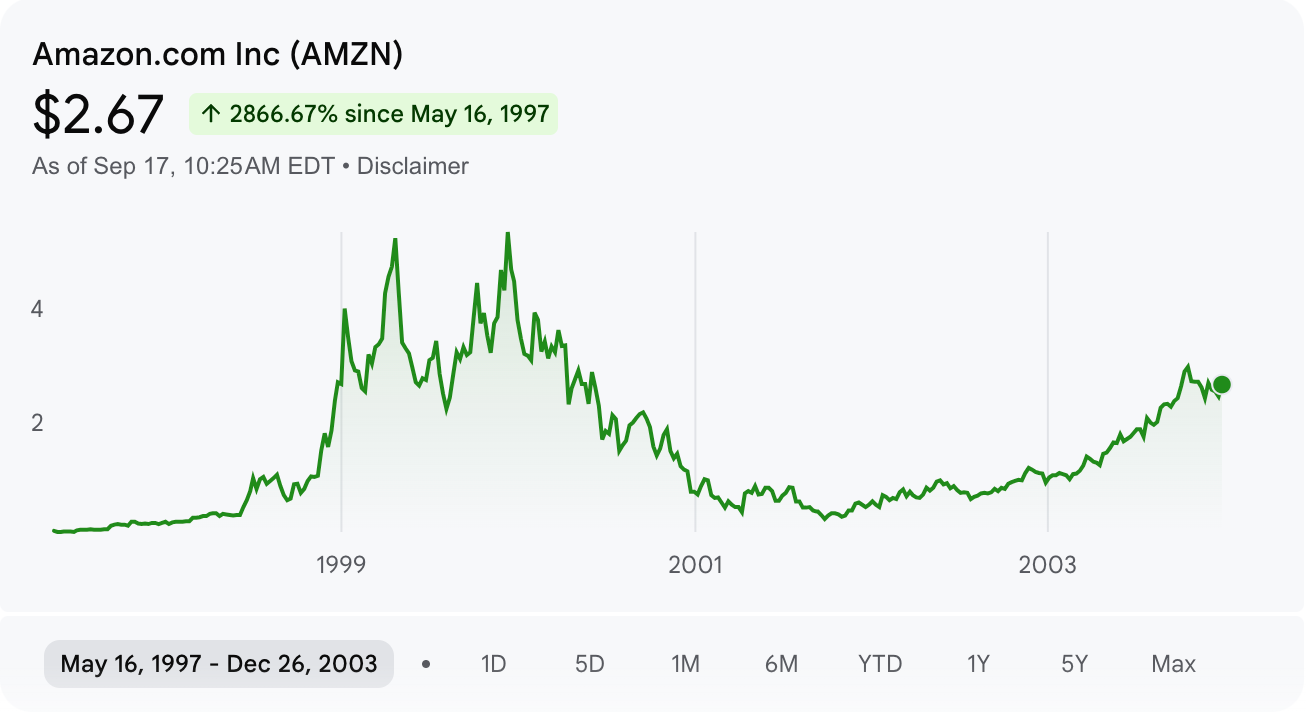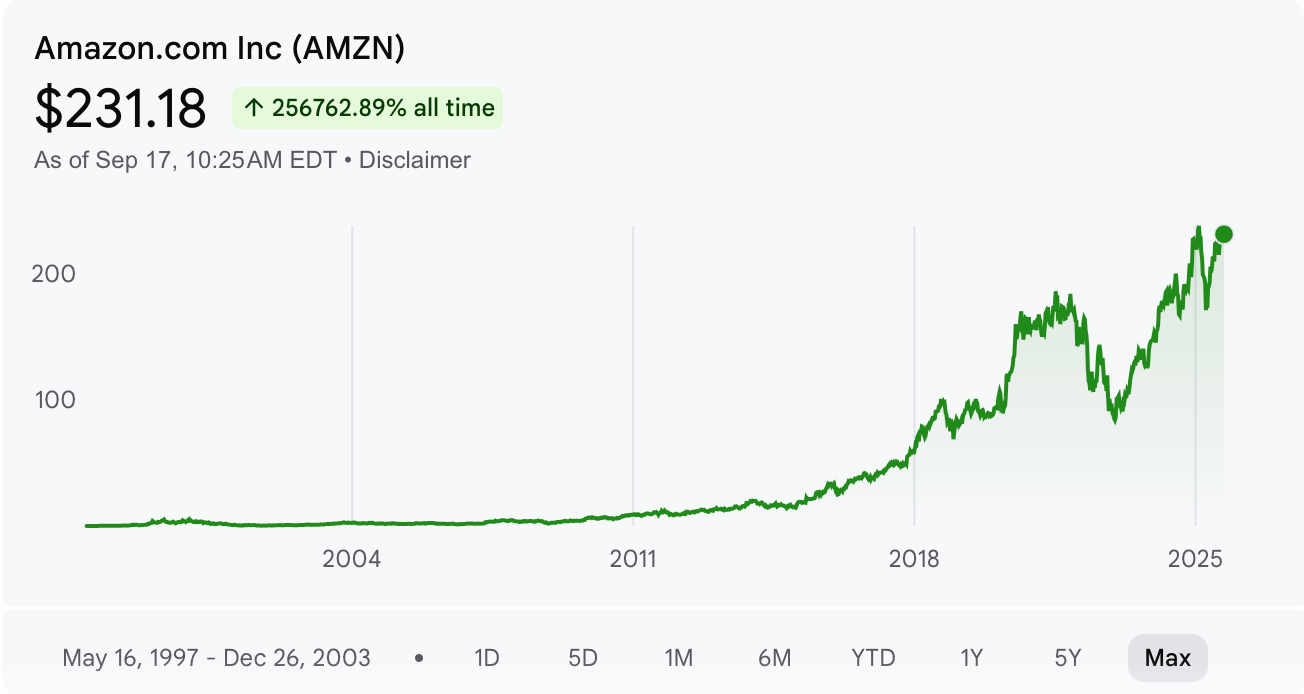Is OpenAI the 'Amazon of AI'? Or the AOL?
Early Internet leaders soared and crashed. Only one went on to thrive.
OpenAI, Nvidia, and other early AI leaders look like sure-fire long-term AI winners. History suggests they might not be — even if the AI industry itself goes on to be even bigger and more lucrative than anyone expects.
If AI industry development plays out like that of the Internet and other major technologies, two things will happen:
Almost all of today’s AI companies will fail
Almost all of today’s investments in companies and infrastructure will be lost
That doesn’t mean that it’s dumb for startups, investors, and corporations to invest in AI right now. AI is a colossal opportunity. And in the early years of profoundly disruptive tech booms, it’s risky to miss out.
Also, the only way to learn is by trying (experimenting and iterating). The people and companies that learn will be the ones who will win, even if most early experiments fail.
But when I say “almost all of today’s AI companies will likely fail,” I mean it.
Unless the early AI leaders are vastly more successful over the long haul than the Internet companies that went public in 1994-2001, almost none will lead the industry or produce vast shareholder returns long-term (unless bought after the crash).
How the early Internet leaders fared
Early investors and entrepreneurs made fortunes on Internet investments from 1994 to 2000.
If they held on past 2000, however, most of them lost most of their gains.
Out of hundreds of Internet companies that went public from 1994-2001, only a handful ever regained their bubble highs.
The Internet investors and companies that made lasting fortunes were the ones that got in and cashed out early (before the crash) or bought in after the crash, when Internet assets were available for pennies on the dollar.
Only one Internet company I can think of — ONE — has delivered a compelling long-term return from its bubble peak — as well as, of course, a gargantuan one from its post-crash bottom. (Two if you count Microsoft, but Microsoft was already public and wasn’t a pure-play “Internet company.”)
That company, not surprisingly, is Amazon.
As you might recall, Amazon’s stock went bananas after its 1997 IPO. It soared from from $0.09 (split-adjusted) to a 1999 high of $5.69, up more than 60X. It then collapsed to $0.30 in 2002, down about 95%.
If you owned the stock from the peak to the trough — as I did — that sucked.
Happily, over the following decades, Amazon made all those losses back, and then some. Amazon is now up 42X from its bubble peak!
In fact, a quarter of a century later, Amazon’s stock performance has provided a return big enough to cover losses in many other Internet investments that went to zero.
Now, Amazon’s 1990s boom and bust looks like a blip:
Alas, Amazon is one of the only early Internet leaders — out of literally hundreds of companies — whose stock performed that way. Most never regained their bubble highs.
The Internet was such a huge opportunity that, if you owned and held a basket of the early Internet leaders — and the basket included Amazon — you eventually did fine.
But “eventually” took more than a decade, a timeframe that most market participants equate to eternity.
Also, the industry was so dynamic and competitive that long-term success turned out to be extremely rare. Most of the early Internet leaders weren’t able to fend off newer, nimbler competitors or navigate tech changes.
For example, I thought Yahoo would be a long-term winner.
From 1995 to 2000, Yahoo lapped all search-engine competitors and seemed poised for generational dominance. Alas, Yahoo then made some missteps (toward media) and got obliterated by a better, nimbler, faster, and more scalable search engine called Google.
I also thought AOL would be a long-term winner.
Instead, AOL missed the transition to broadband and became Internet roadkill.
Most of the early “picks and shovels” providers and infrastructure builders that seemed good bets no matter who won the Internet consumer-adoption wars also got killed. Netscape. JDS Uniphase. EMC. Global Crossing. Exodus. Etc. Even the companies that didn’t go bankrupt (some did) got permanently kneecapped.
Twenty five years later, two other early Internet leaders have finally crawled back to their bubble highs — eBay and Cisco. But, inflation-adjusted, they’re still far lower than they were in 2000.
So what does this mean for early AI leaders like OpenAI and Nvidia?
It means that, no matter how well these companies are doing today — and how impregnable they look — they might get obliterated.
Startups that are raising their first round or two of capital right now might vault past them and become the Googles, Netflixes, Facebooks, Apples, and Teslas of the AI era.
The same goes for the $400+ billion of infrastructure investments that companies like Microsoft, Facebook, Google, and Amazon are making this year.
Those investments are being funded primarily out of the companies’ cash flow, so losing them won’t hurt third-party investors much (except those who own Nvidia, et al). But given the relatively small amount of AI revenue being generated today and the rapid rate at which some AI infrastructure depreciates — Nvidia chips, for example — it won’t be surprising if these investments fail to earn a reasonable long-term return.
So, when’s the crash?
I would respectfully suggest that no one knows for sure whether AI is a bubble — and won’t until history has played out.
Even those who are very confident that there will one day be a tremendous AI crash have to deal with the question of “when?” And another lesson from the Internet era is that that is a very difficult question to answer in advance.
(Forecasters predicted Internet doom continuously from 1995 to 2000. For years, they were disastrously wrong. And their poor timing often cost them their companies, reputations, and careers — and clobbered their investors and employees.)
If I had to guess, I’d say the AI boom has a ways to go. I’d guess we’re in the equivalent of, say, 1997 (three years before the Internet crash), rather than 1999 (months).
The excellent Azeem Azhar at Exponential View has invented a clever framework for assessing “bubble-ness,” in which he compares the AI boom to the Internet, railroads, and other famous boom-bust cycles of the past. Azeem’s bubble indicators suggest a similar conclusion — that things in AI don’t look crazy yet.
Also, amid a profoundly disruptive boom like this, it’s as risky to sit out as it is to go all-in. So it’s not stupid for today’s investors and companies to invest aggressively in AI.
But no one should be surprised if the AI industry goes through the same kind of temporary bust that the Internet did… before it went on to create (and destroy) trillions of dollars of value and change the world.
Similarly, no one should be surprised if the current AI leaders, like OpenAI, go on to become the AOLs and Yahoos of the AI era.
But here’s hoping they’ll all be Amazons!
See also: “Bubble lessons” for the AI era
Thank you for reading Regenerator!





